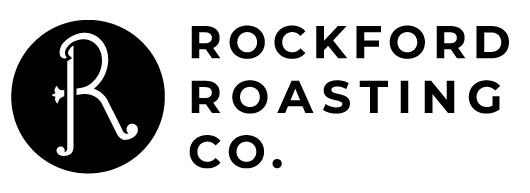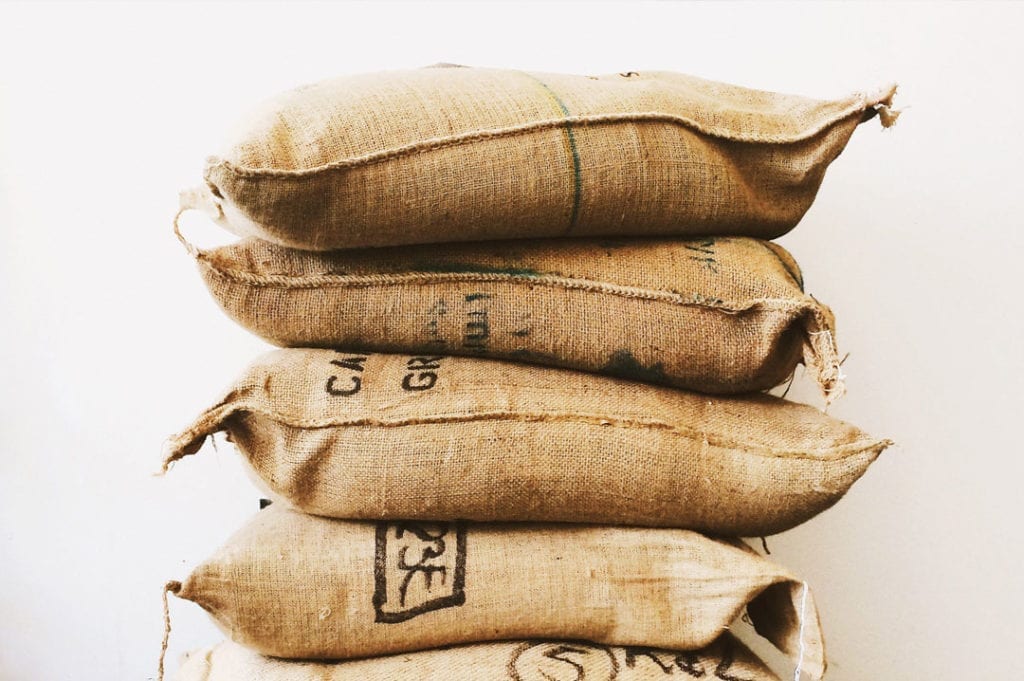
Sourcing
It has become far too easy in our consumer culture for us to forget that coffee is a crop. This means that coffee is grown by farmers; it requires workers to harvest, to mill, to dry, and a list of other tasks that happen well before those beans ever arrive to us.
It has become far too easy in our consumer culture for us to forget that coffee is a crop. This means that coffee is grown by farmers; it requires workers to harvest, to mill, to dry, and a list of other tasks that happen well before those beans ever arrive to us. Coffee, like most crops, is subjected to climate and growing cycles. Luckily for us, it is an international crop, and year-round it is being harvested in the various coffee-producing regions world-wide.
Viewing coffee in this way, as a crop, allows us to make choices based on the growing region, quality, and freshness. We believe if handled properly at origin, coffee has the potential to be respected and treated like a fine wine. We aim to bring in coffees that have been grown properly and responsibly. Quality sourcing is just the first step in our journey toward the best possible flavor in the resulting cups of coffee we make.
Cupping
The Specialty Coffee Association of America defines cupping as “a systematic method of evaluating the aroma and taste of coffee.” Cupping is the way that we analyze coffees before we purchase them.
The Specialty Coffee Association of America defines cupping as “a systematic method of evaluating the aroma and taste of coffee.” Cupping is the way that we analyze coffees before we purchase them. We use cupping to determine quality. We will roast small amounts of green coffee (coffee beans that haven’t been roasted) to give us a basic idea of its characteristics. The factors we look at fall into four main categories: fragrance, acidity, taste, and mouthfeel.
We have regularly scheduled public cuppings where we aim to develop the pallet & educate our customers in the coffees we sell.
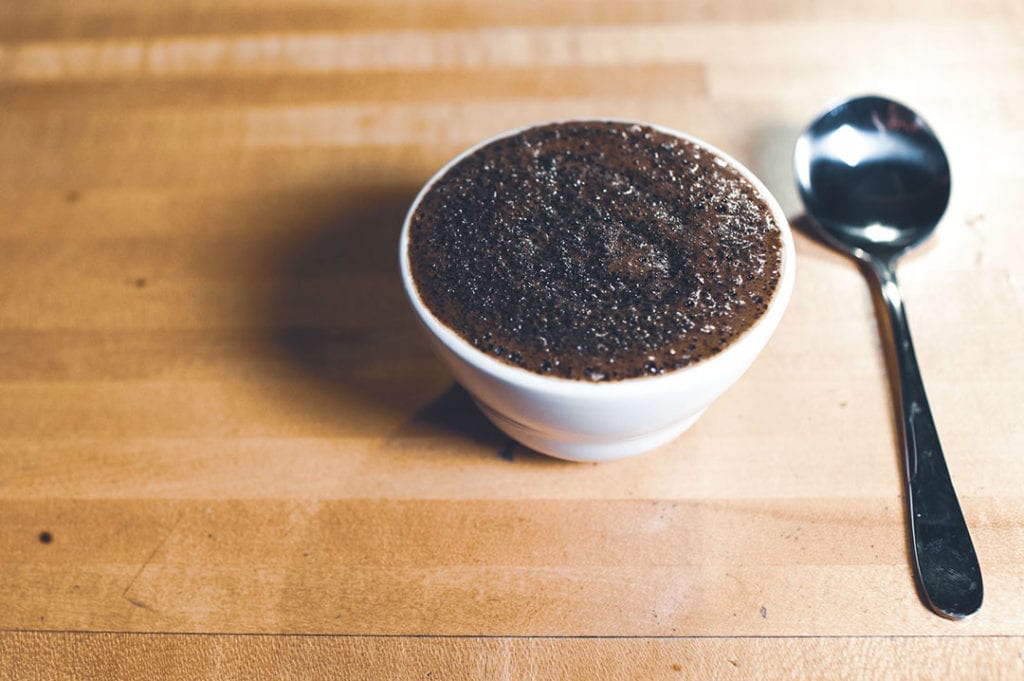
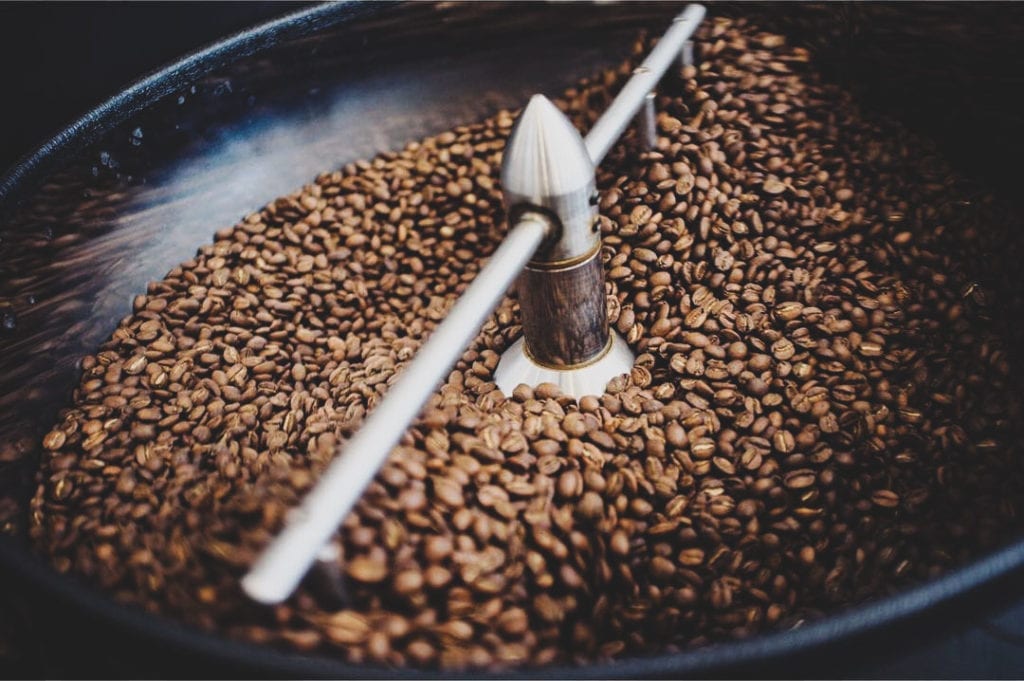
Roasting
Once we have selected coffees, the next step is to roast for production. Roasting is a fairly simple idea that can take years of practice to master. When roasting, green coffee (coffee beans that haven’t been roasted) is put over heat for a particular length of time.
Once we have selected coffees, the next step is to roast for production. Roasting is a fairly simple idea that can take years of practice to master. When roasting, green coffee (coffee beans that haven’t been roasted) is put over heat for a particular length of time. During that time the bean transforms into the brown to dark brown we know as the color of coffee. However, the color of the beans isn’t the only thing that changes. Much like wine, coffee has sugars and acids that are inherently present in each bean. As the beans heat up, these compounds begin to interact and settle into the flavors you taste in the cup.
Our roasting theory is simple: we want our roasting to enhance the natural flavor of each and every coffee we offer.
Roasting for too long can burn the sugars or release unpleasant astringent qualities from the acids. Each coffee has a specific roast level, at which we find it shines the brightest. Likewise, each coffee has a unique set of tasting notes ranging from lemon acidity & juicy red berry sweetness to dark chocolate & toasted nuts. These flavors are not created through the use of additives or any extra process, but are brought out in the cup by thoughtful sourcing and roasting.
The flavors in your cup begin with properly and responsibly grown coffee, and is intentionally roasted with respect to the planting, cultivating, picking, milling, drying, and handling of the beans beforehand.
Brewing
How often have you heard people say, “I love the smell of coffee, but dislike its taste”? Improperly roasted and poorly brewed coffee is often the case for this. Aromas are created as the coffee slowly releases gas from oils within the bean into the air.
How often have you heard people say, “I love the smell of coffee, but dislike its taste”? Improperly roasted and poorly brewed coffee is often the case for this. Aromas are created as the coffee slowly releases gas from oils within the bean into the air. This process is sped up by grinding the coffee, and by the addition of water. Taste, however, is based on the solution that is created by allowing water to be in contact with ground coffee particles. Correctly creating this solution is where proper brewing techniques come in.
Without proper extraction, the coffee will never taste as good as it smells. Under-extracted coffee will tend to taste sour and uneven, whereas over-extracted coffee will lean more towards bitterness. Proper extraction is based on water temperature, contact time, and grind size; filtered vs. non-filtered, full-immersion vs. pour over, cold brew vs. hot brew, espresso vs. drip. These are all examples of brew methods.
Each brew method imparts a unique set of characteristics to the cup. It is the job of a trained barista to determine what proper extraction tastes like for each coffee they are working with. “Dialing-in” is a phrase referring to the manipulation of the three factors of extraction in connection to each other to achieve a specific result.
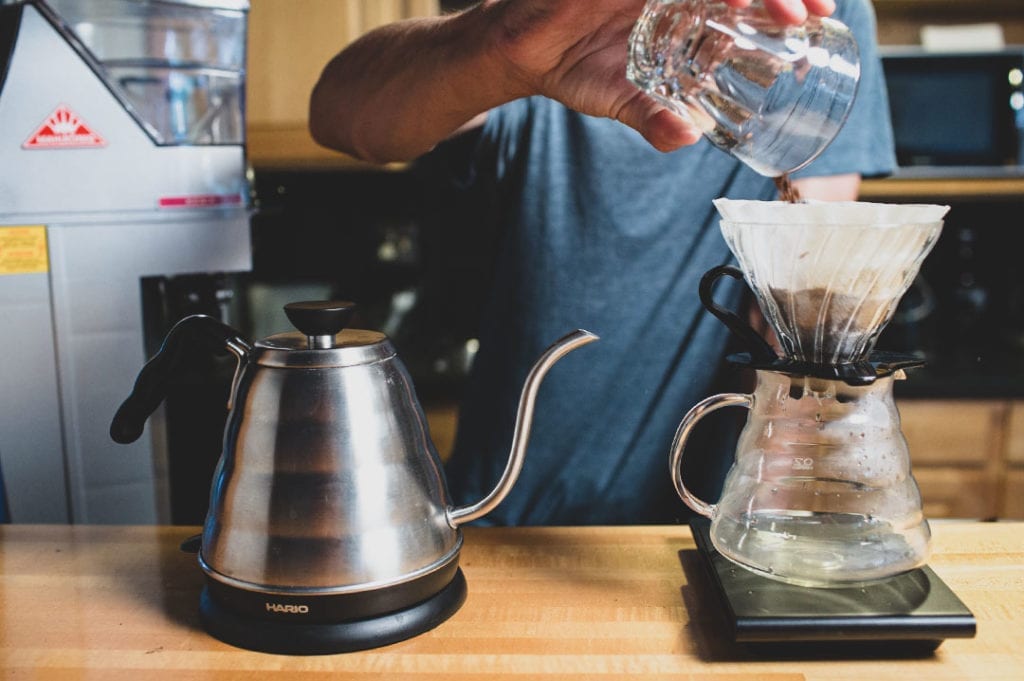
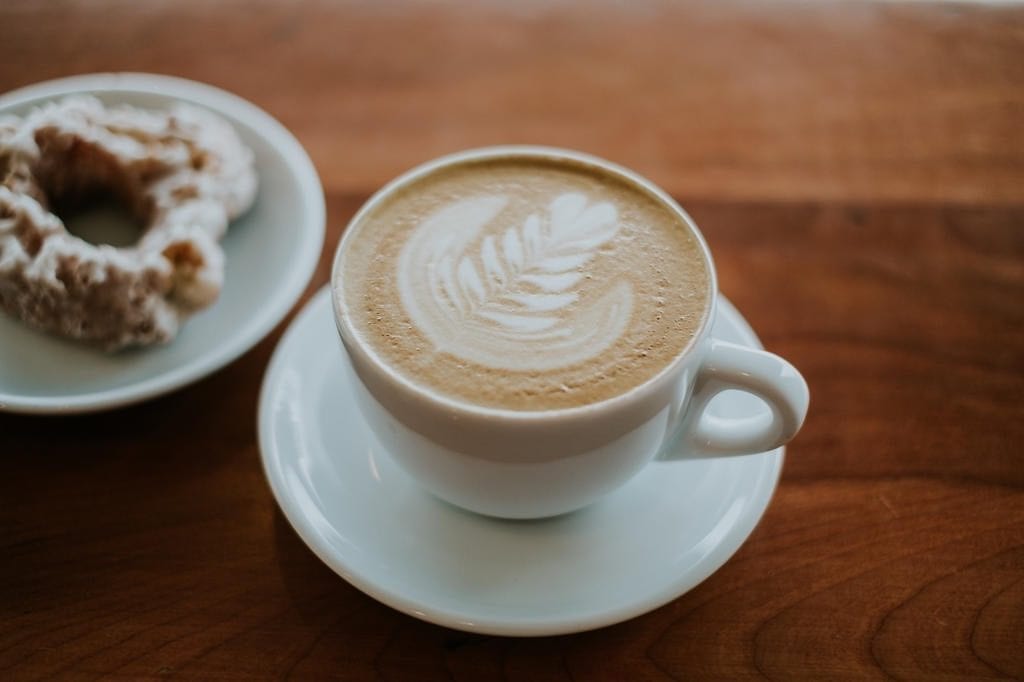
Service
There are few things that can compare to a successfully “dialed-in” coffee beverage crafted by a professional barista. Our baristas are trained to make drinks using precise ratios of coffee to water and espresso to milk.
There are few things that can compare to a successfully “dialed-in” coffee beverage crafted by a professional barista. Our baristas are trained to make drinks using precise ratios of coffee to water and espresso to milk. A good barista will have a close relationship with the coffees they are serving, and be able to tell you specific details about the coffees. Baristas are able to discuss details like where the coffee was grown and tasting notes present. They are able to listen to customers likes and dislikes in order to suggest certain drinks and even suggest pastry items. All this goes into the service of our coffee at our Roasting Facility + Brew Bar located in Downtown Rockford.
*We will provide sweetener and cream for those who take their coffee that way. However, In our efforts to create the perfect cup of coffee we do kindly ask that you please try the coffee as crafted by the barista prior to adding things to it. We think you will be amazed.
